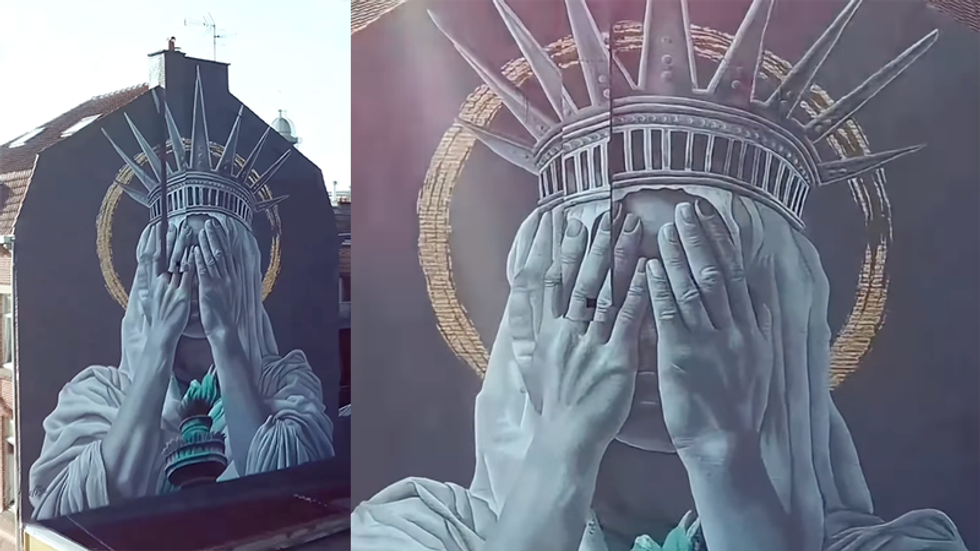
A new mural in France has sparked international attention by critiquing the United States on its Independence Day. The artwork, titled “The Statue of Liberty’s Silent Protest,” depicts the iconic symbol of freedom, Lady Liberty, covering her eyes in apparent shame. This striking piece, located in Roubaix, was unveiled on July 3, a day before the U.S. celebrated its national holiday.
The mural was created by Dutch artist Judith de Leeuw, who aimed to comment on America’s current immigration policies under former President Donald Trump. “The Statue of Liberty was a celebration of friendship, and given in the name of Independence Day — a day meant to honor the right to freedom for all,” Leeuw stated in an Instagram post. “But today, that freedom feels out of reach. Not for everyone. Not for migrants. Not for those pushed to the margins, silenced, or unseen.”
The Historical Connection Between France and the U.S.
The unveiling of the mural comes as a poignant reminder of the historical ties between France and the United States. France was a crucial ally during the American Revolutionary War, and the Statue of Liberty itself was a gift from France to the United States after the Civil War. The statue was intended to symbolize freedom and democracy, values both nations have long cherished.
Emma Lazarus’s sonnet “The New Colossus,” inscribed on a bronze plaque inside the statue’s pedestal, famously welcomes immigrants with the words:
“Give me your tired, your poor, your huddled masses yearning to breathe free.”
Lazarus’s poem was instrumental in raising funds for the statue’s pedestal and reflected her commitment to aiding Jewish refugees fleeing antisemitic violence in Eastern Europe. The Statue of Liberty thus became a beacon of hope for countless migrants seeking a new life in America.
Art as a Form of Protest
Judith de Leeuw’s mural in Roubaix, a city known for having one of France’s largest migrant populations, uses art to voice a silent protest. “I painted her covering her eyes because the weight of the world has become too heavy to witness,” Leeuw explained. “What was once a shining symbol of liberty now carries the sorrow of lost meaning.”
This artistic expression aligns with a broader tradition of using public art to comment on social and political issues. Murals and street art have long served as platforms for marginalized voices, offering a canvas for artists to critique and reflect on societal injustices.
Implications and Reactions
The mural has sparked diverse reactions from both sides of the Atlantic. Some view it as a necessary critique of current U.S. policies, while others see it as an unwelcome political statement. The artwork raises questions about the evolving meaning of liberty and the responsibilities of nations to uphold the values they symbolize.
As the world grapples with increasing migration and refugee crises, the mural serves as a reminder of the ongoing struggle for freedom and equality. It challenges viewers to reflect on the ideals of liberty and justice, urging a reconsideration of policies that affect the most vulnerable.
Looking Ahead
As debates over immigration and national identity continue to unfold, the mural in Roubaix stands as a testament to the power of art to provoke thought and inspire change. It invites a global audience to engage in dialogue about the true meaning of liberty and the role of nations in upholding human rights.
Judith de Leeuw’s work, completed in just six days, offers a quiet yet powerful reminder of what freedom should represent. As the world observes the mural, it remains to be seen how this artistic protest will influence public discourse and policy in the years to come.





